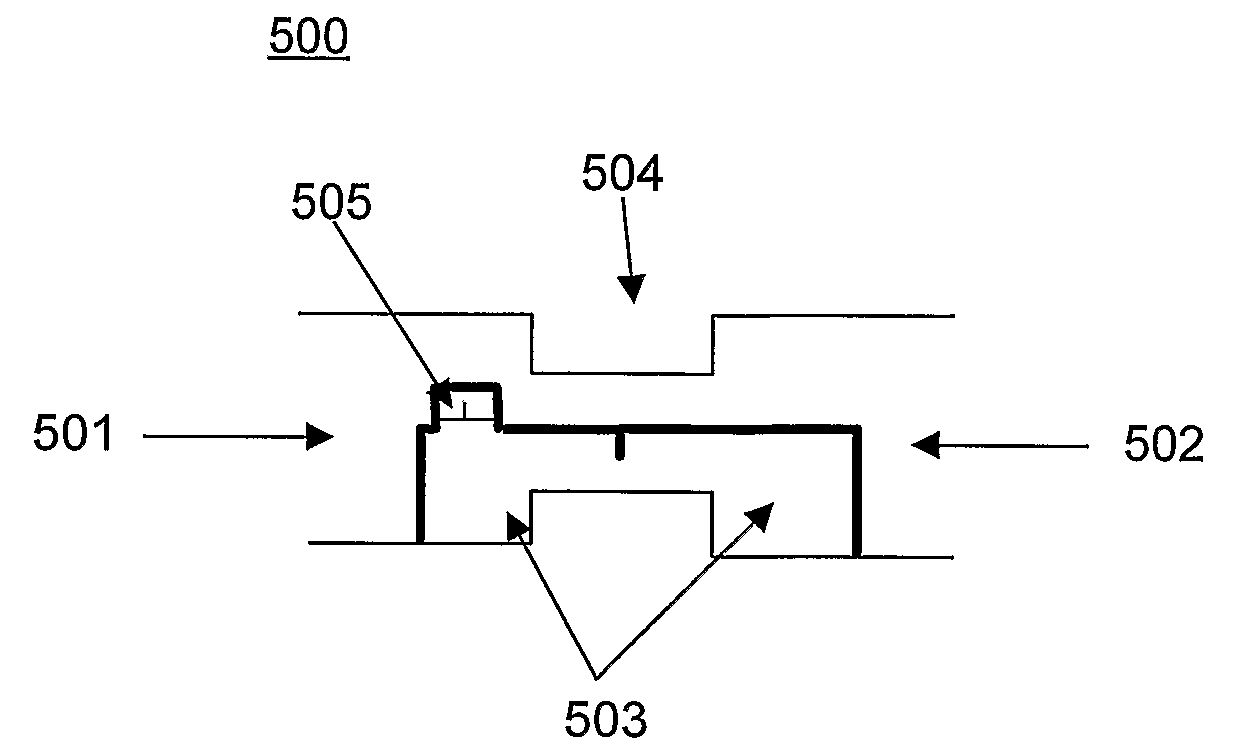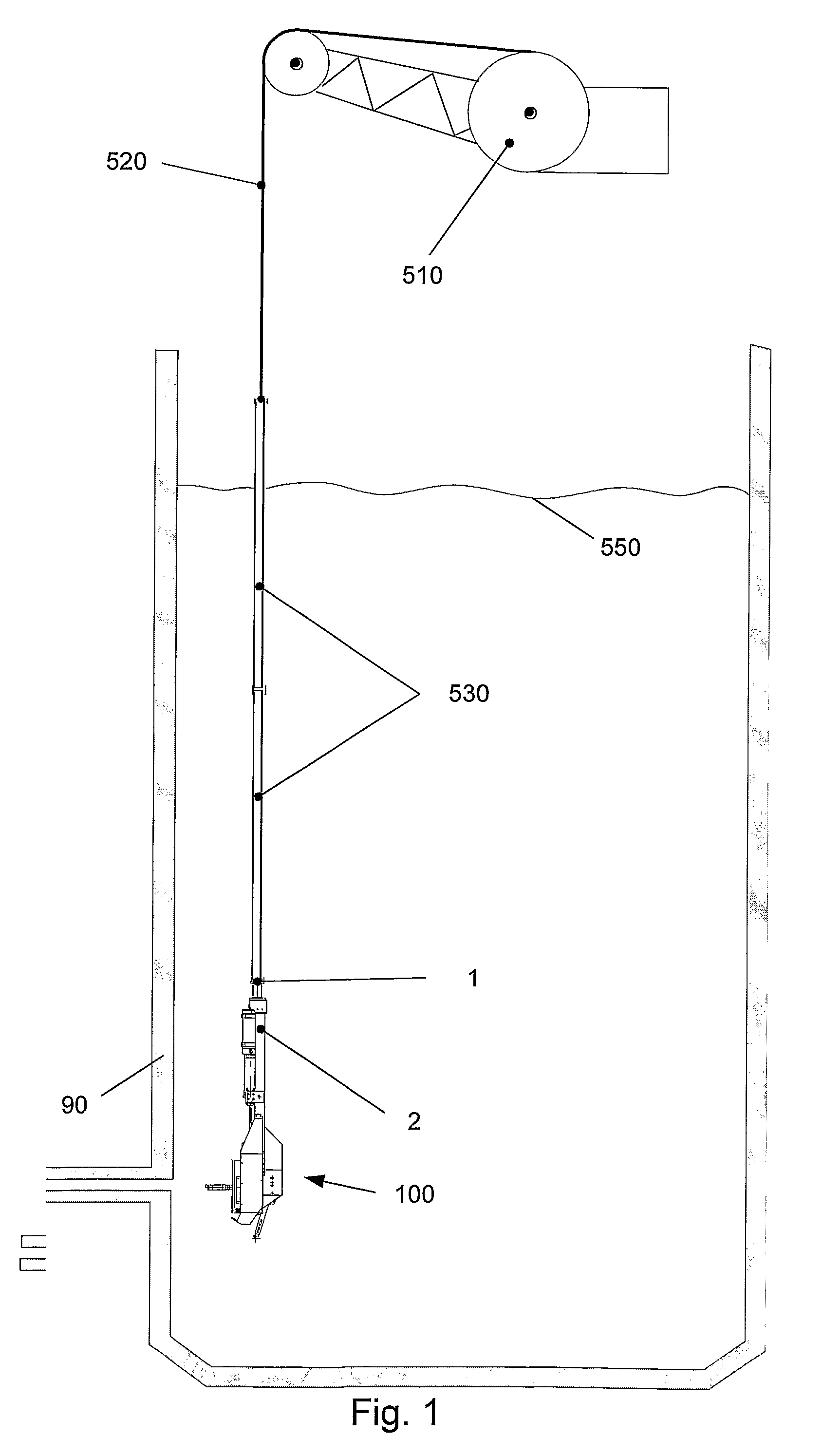[0017]According to an advantageous embodiment, the moulding device according the invention moreover comprises means for reducing the volume of the moulding chamber formed. When the volume of the moulding device can be reduced, the moulding chamber can be filled up substantially completely with moulding material, and this moulding material can subsequently be put under increased pressure by said
volume reduction. Typically, the area of the first moulding chamber part is magnitudes greater than the cross-sectional area of the at least one outlet; this ensures that the movement of the movable plate results in an increased pressure inside the moulding chamber. Hereby, any small occurrences of fluid within the moulding material can be removed, i.e. forced out by the increased pressure. This results in a considerably enhanced quality of the cast and surface imprint thereof. It should be noted, that the movable plate can have any appropriate shape adapted to the surface and the shape and size of the moulding chamber. Thus, it could be curved, flat or shaped to correspond to a specific geometry.
[0020]According to yet another embodiment of the invention, the first moulding chamber part or the movable plate moreover comprises a test piece with surface defects having well-known characteristics. This test piece is placed at the surface of first moulding chamber part or at the movable plate, if this is present in the moulding chamber, so that the surface of the cast resulting from the moulding which has been adjacent to the test piece (i.e. either the first moulding chamber part or the movable plate) comprises an imprint of the test piece. Thus, if the test piece is known to have a characteristic of a predetermined size, such as 1 μm, the presence or absence of an imprint of this characteristic indicates whether the quality of the cast has been adequate to detect flaws / defects of this predetermined size. Thus, a reliable
quality control is achieved.
[0022]According to an embodiment of the invention, the moulding device moreover comprises an axle connecting the first moulding chamber part to the second moulding chamber part. Thus, the first and second moulding chamber part can be moved as one coherent part. Moreover, the second moulding chamber part adapted to be inserted into the passage in the surface, can be adapted for fixating the moulding device to the surface to be inspected. Hereby, the second moulding chamber part has two functions: to delimit the moulding chamber together with the first moulding chamber part and the surface and to assist in fixating the moulding device to the surface.
[0023]According to yet another embodiment, the axle comprises a first channel with two ends, whereof one end is arranged to be an outlet for letting fluid from the moulding chamber into the channel and whereof the other end is arranged to be an outlet for letting out fluid from the channel. Hereby, it is possible to provide an outlet close to the upper part of the indentation formed by the passageway, close to the second moulding chamber part, thereby facilitating the escape of fluid from the indentation.
[0024]Advantageously, the second moulding part is an expandable member, and the axle moreover comprises a second channel with two ends, whereof one end is arranged to be an inlet of pressurized fluid and the other end is an outlet into the inside of the expandable member. Hereby, the second moulding part arranged to be inserted into the passage in the surface can have a size and shape adapted to the size and shape of the passage, so that it can easily be inserted therein. After the
insertion, pressurized fluid, e.g. pressurized water, can be let into the second channel to make the expandable member expand to seal towards the passage in the surface. Hereby, the second moulding chamber part is fixated inside the passage and seals off the moulding chamber. The expandable member can be any appropriate member, for example an expandable rubber plug.
[0032]at least one test piece with surface defects having well-known characteristics for making at least one imprint on said cast of said surface.Thereby the moulding device may delimit a section of a surface comprising for example a length of a
pipe with a reduced
diameter e.g. a
reducer section of a
pipe. Further, the moulding device may inject moulding
mass from both moulding devices / sections and / or the moulding device may reduce the volume of the mould using both devices / sections.
 Login to View More
Login to View More 


